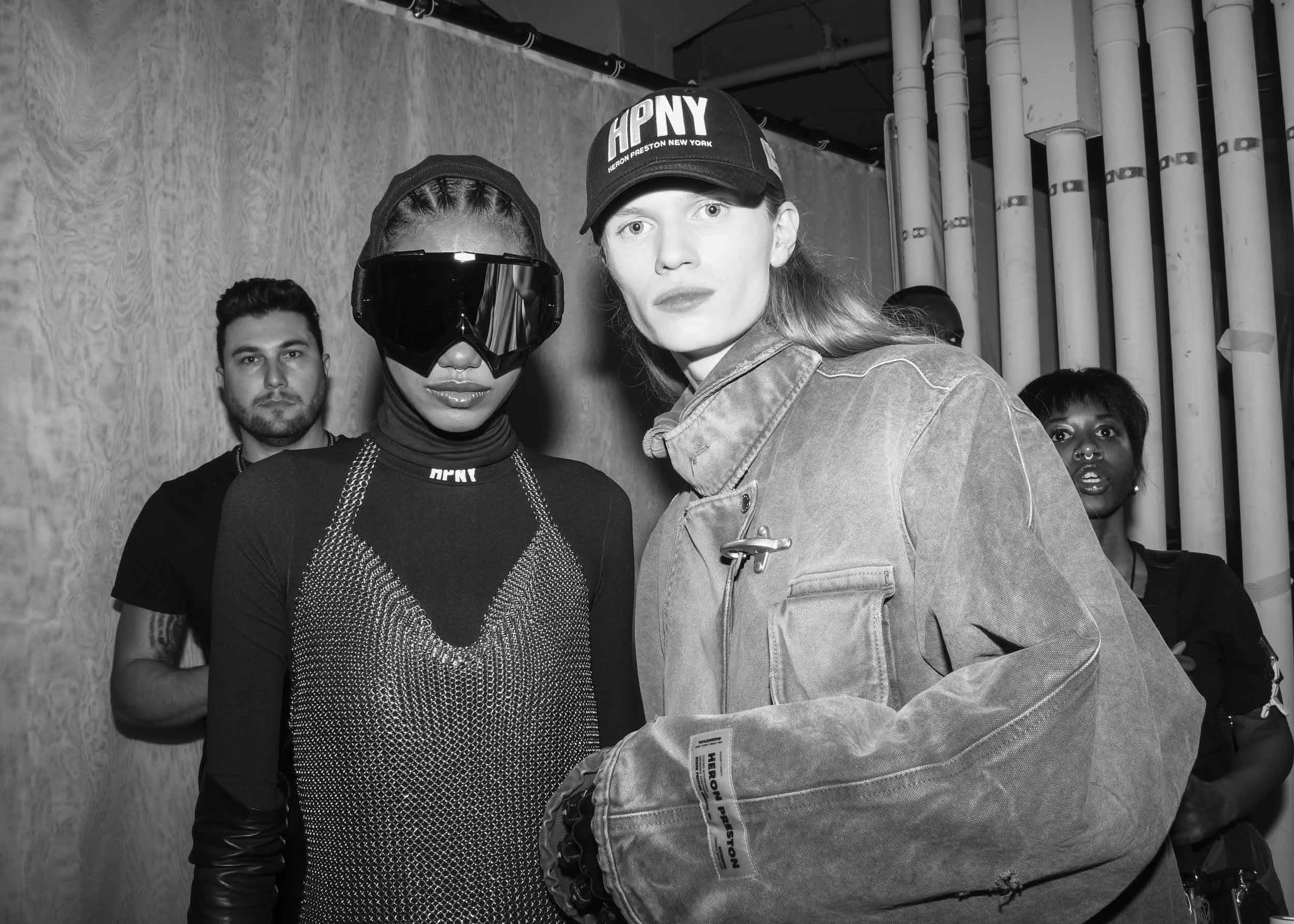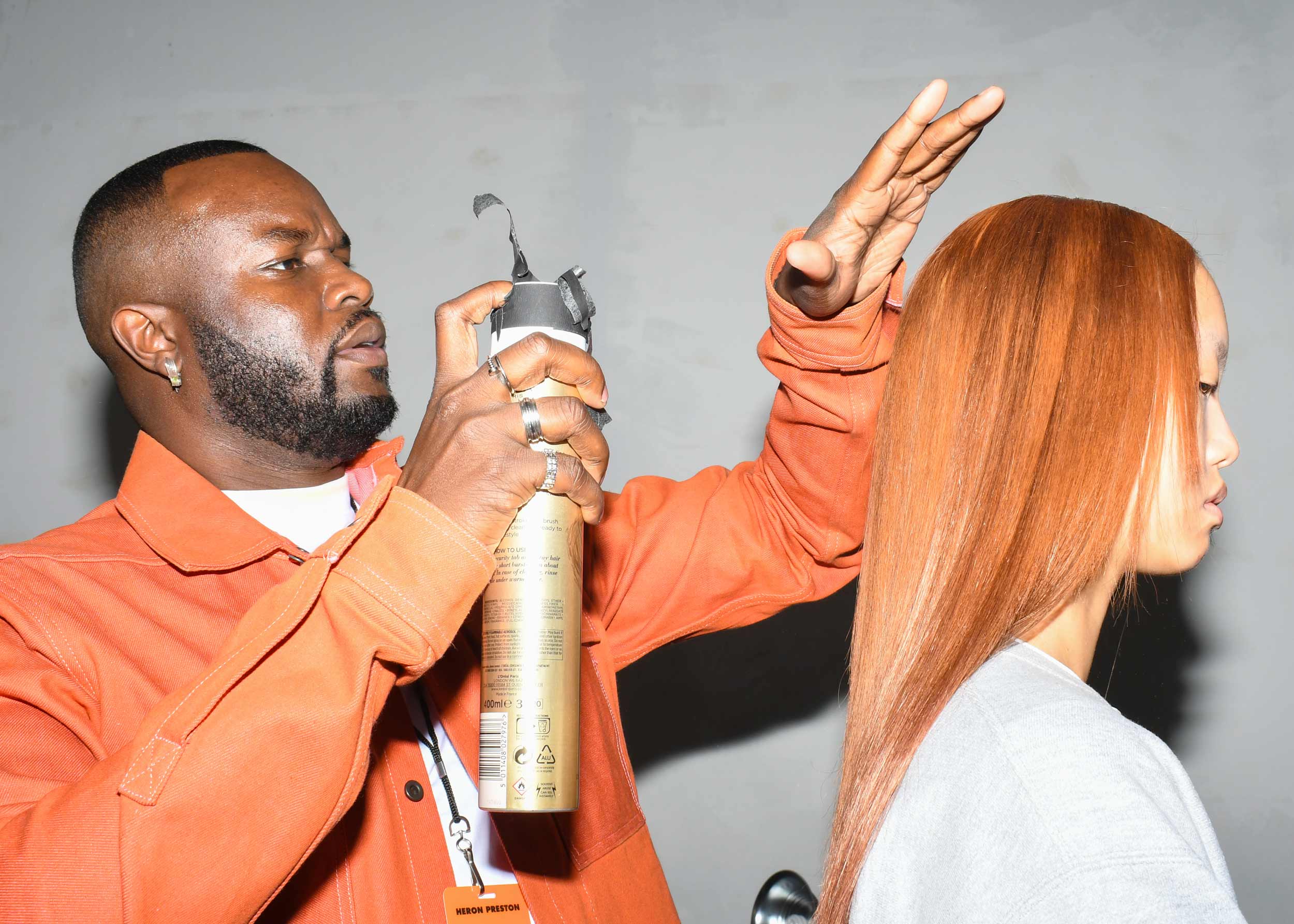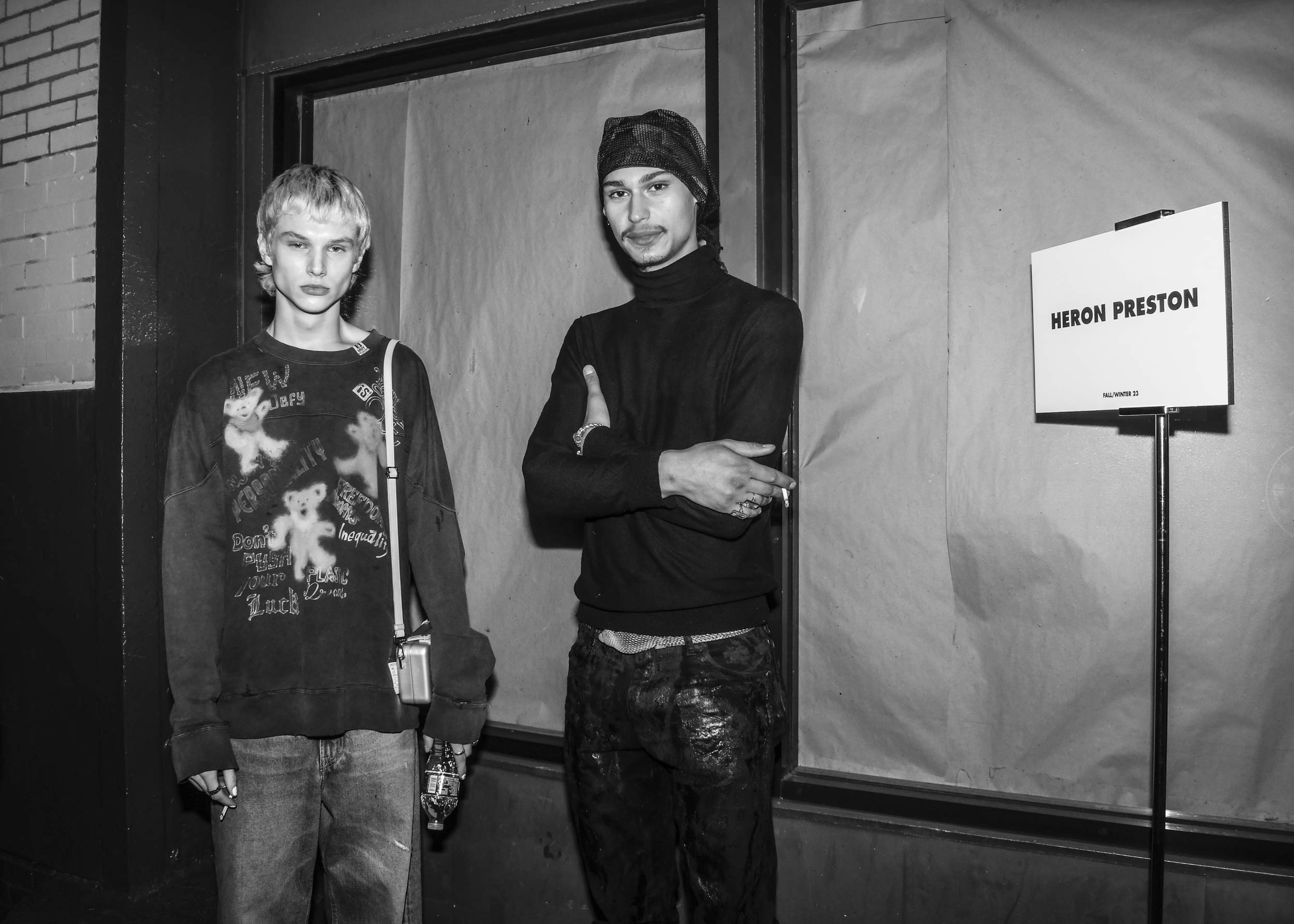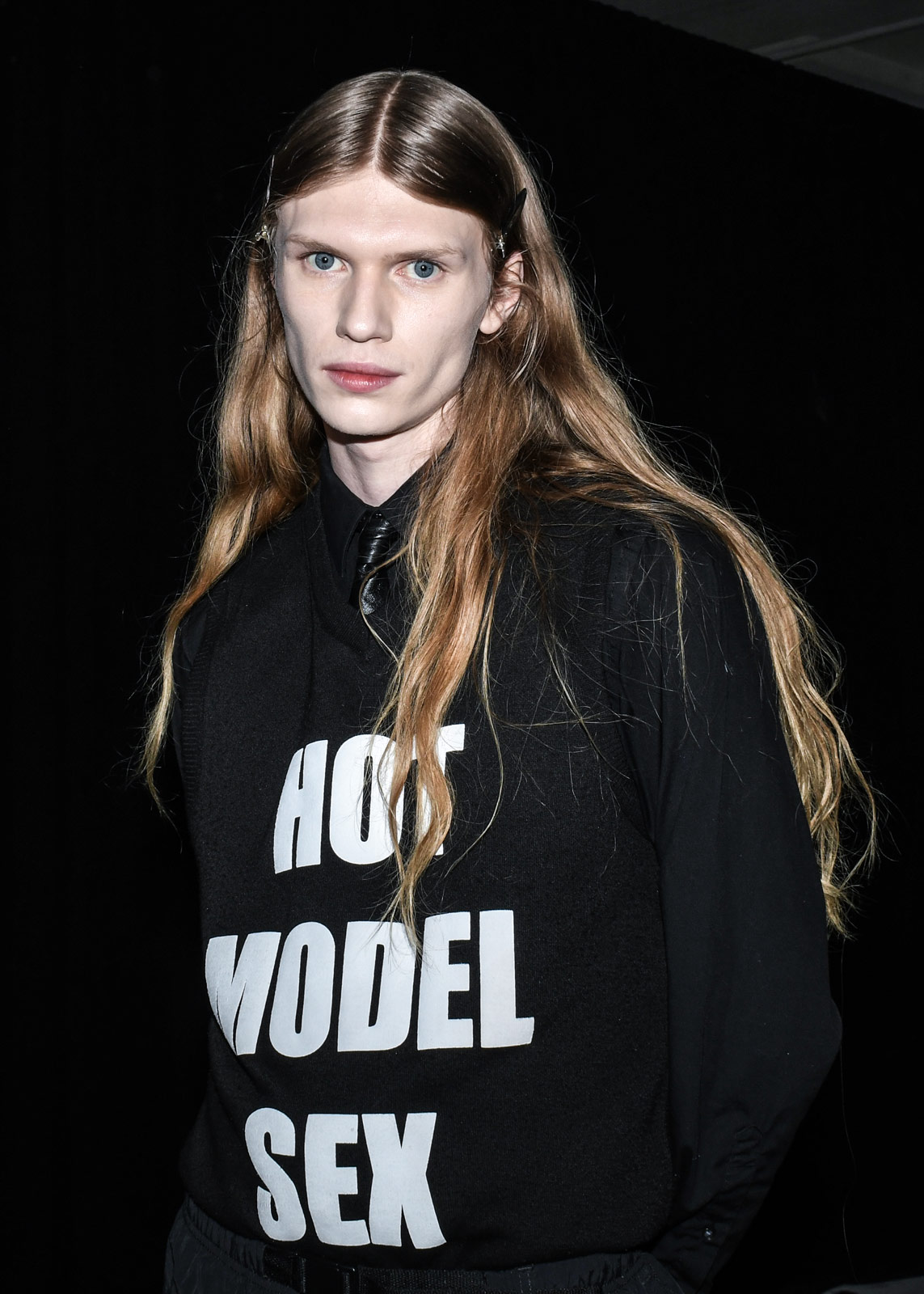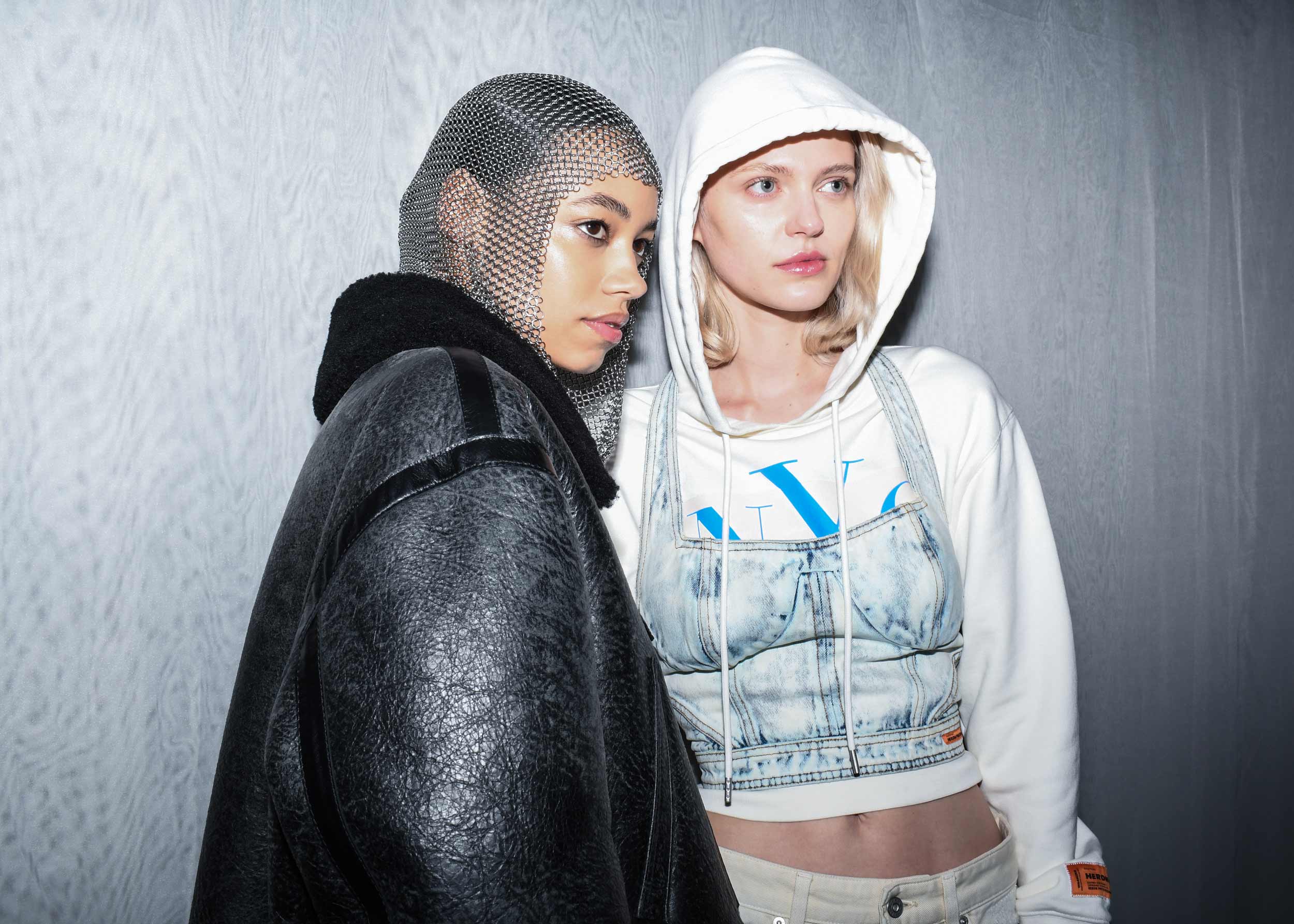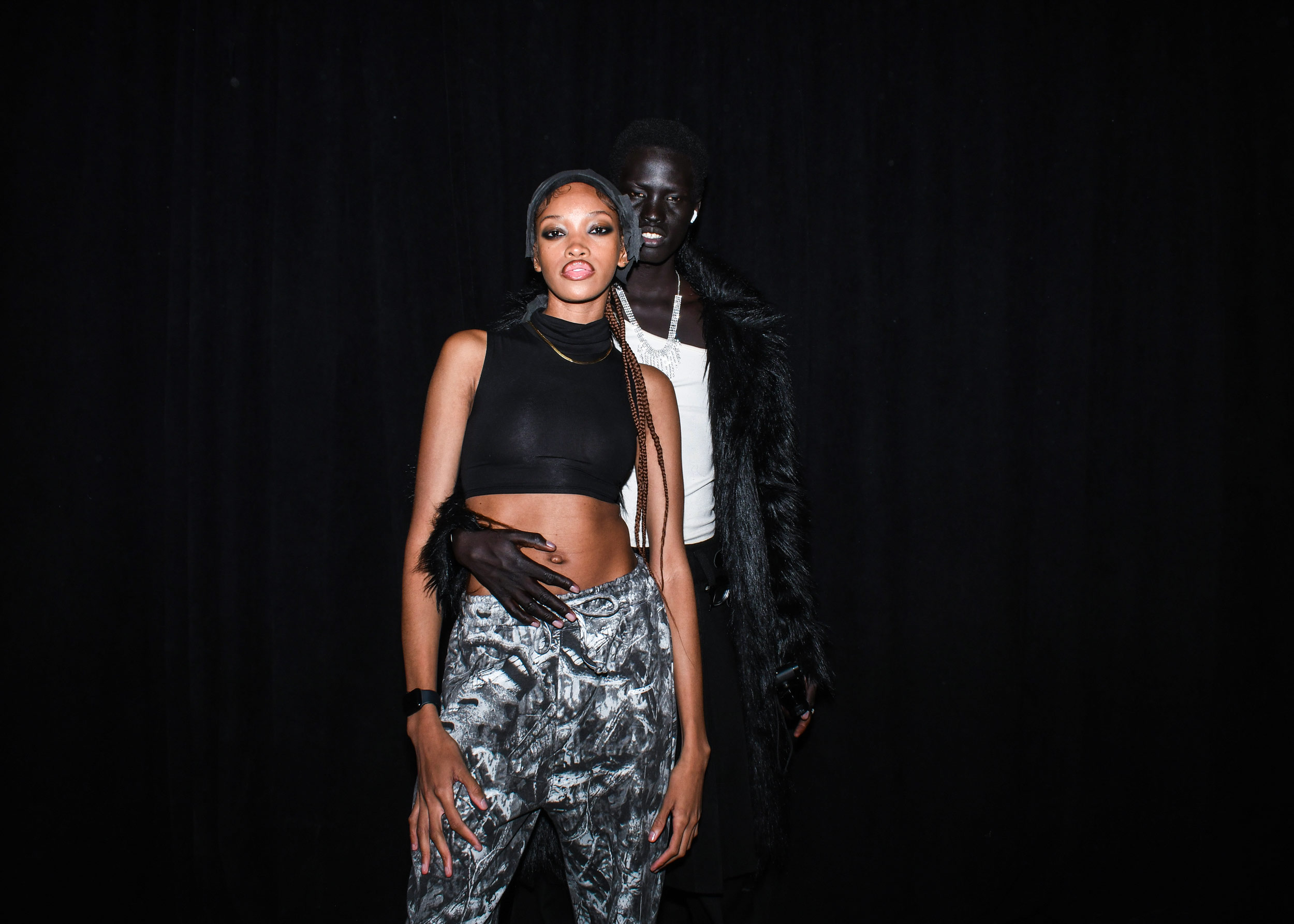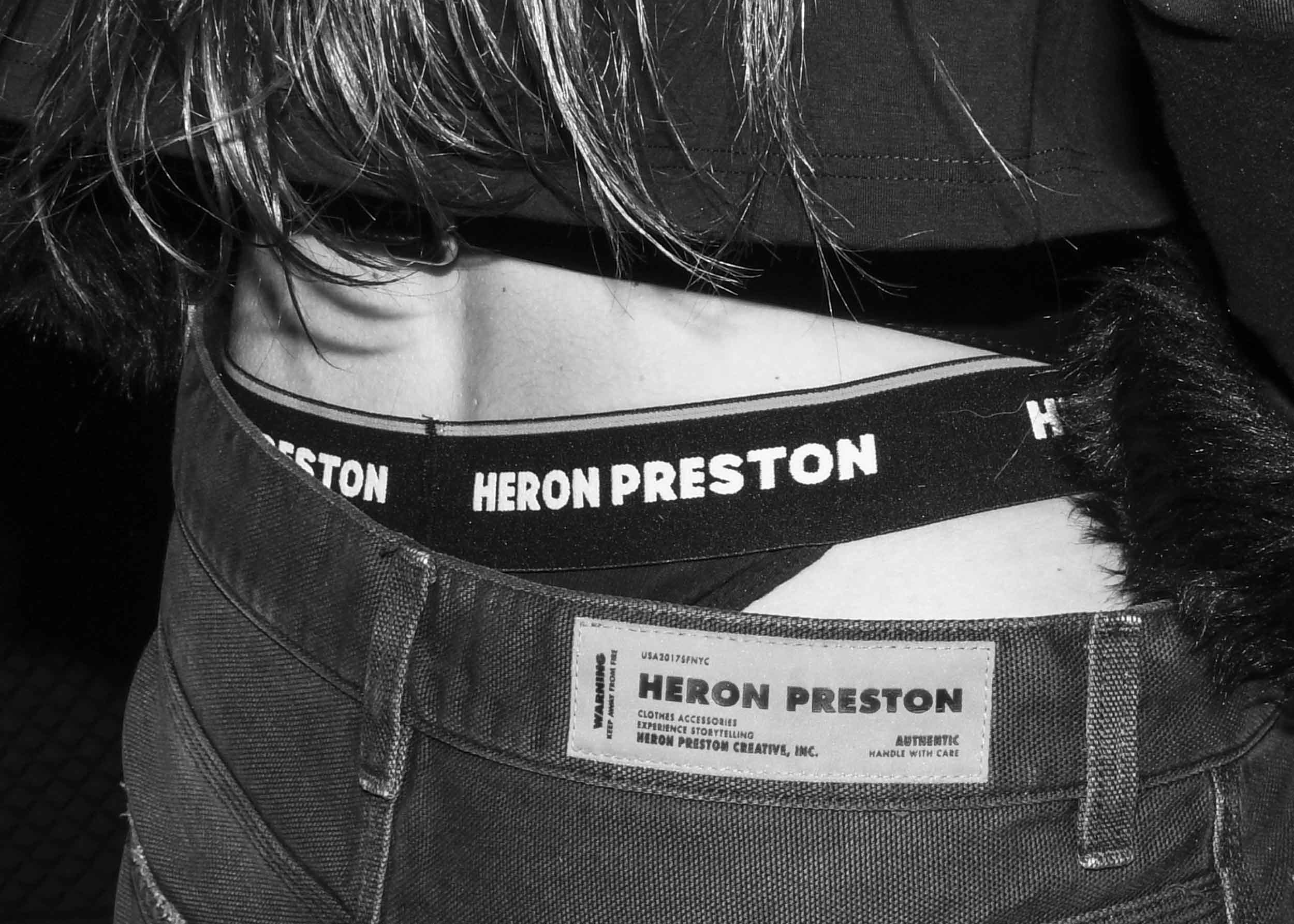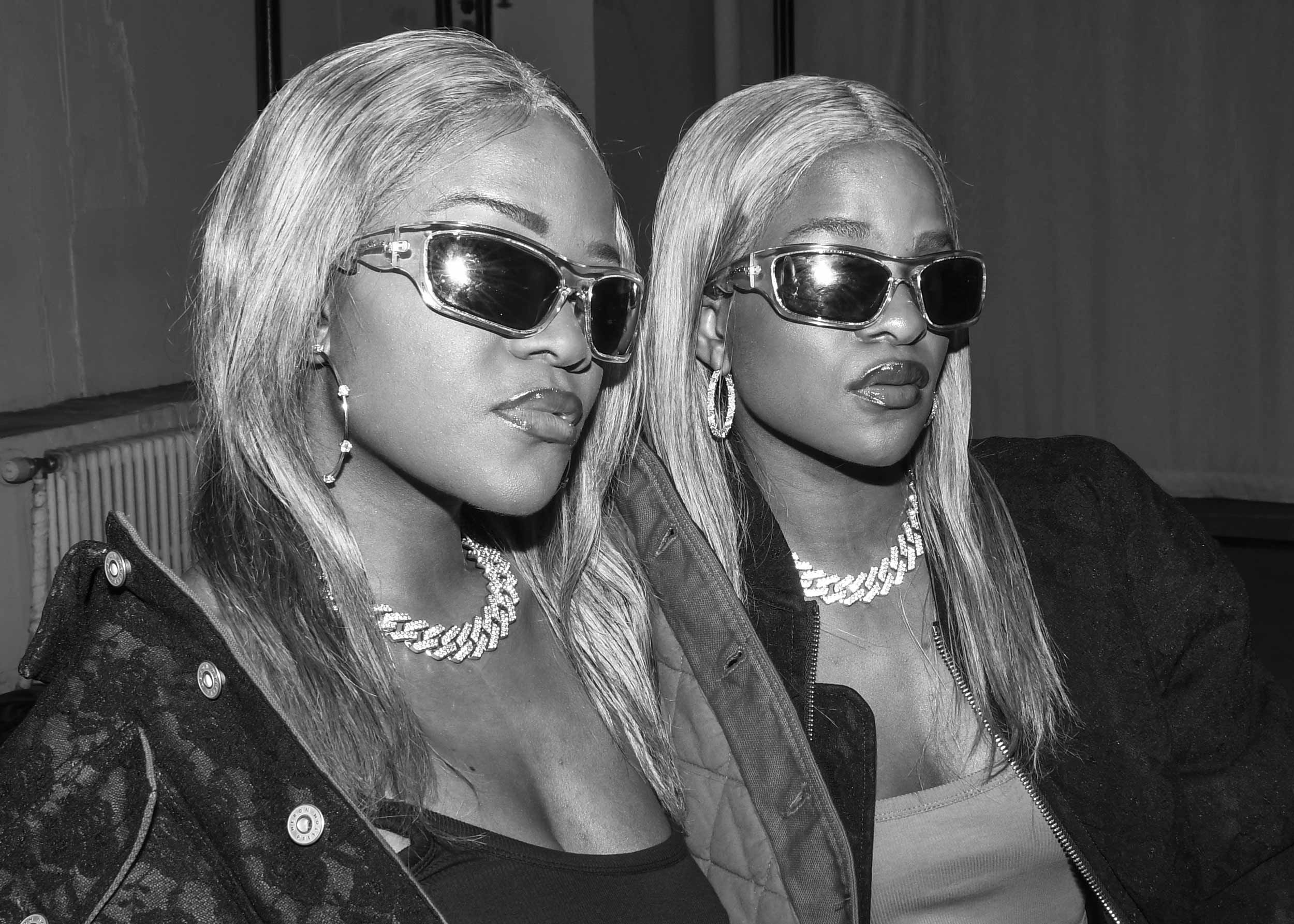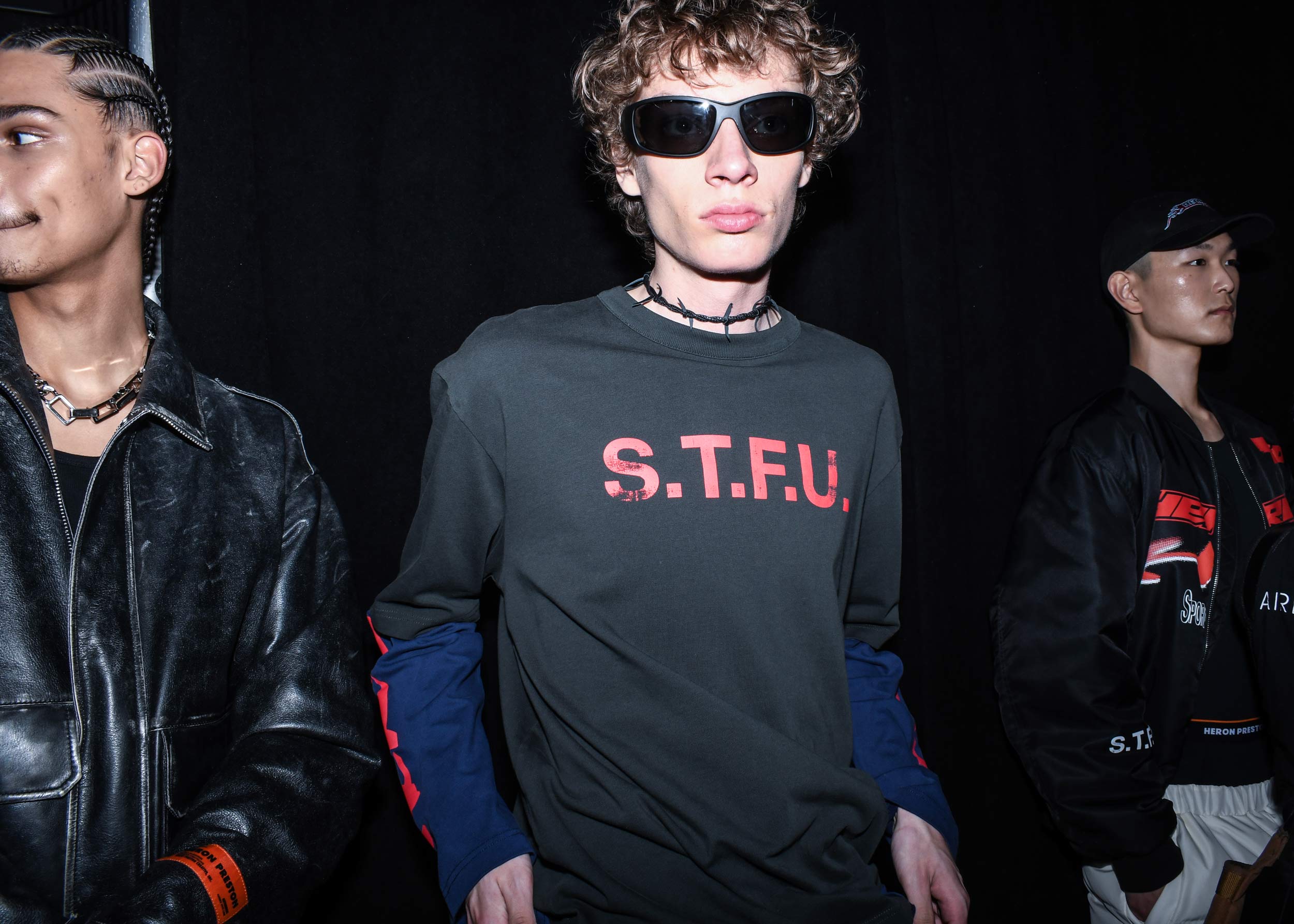In the aftermath of his Fall/Winter 2023 runway show, Document catches up with the designer reimagining the urban uniform
Heron Preston made history this Fashion Week, delivering a debut and a homecoming in the very same breath. It’s his namesake label’s first show in New York, despite the fact that his practice is quintessentially defined by the city’s street culture—its colors, its symbols, its armor-like silhouettes. For Fall/Winter 2023, Preston looked underground, to urban life’s ultimate uniting factor: “The MTA… [It’s] the cross-section of the city. It’s the place where style codes and street uniforms collide.”
Showgoers were called to a vacant loft via pieces of trash repurposed as invites: beer cans, shoe boxes, plastic water bottles—anything that could be flattened out and sent off in the mail. It was all in the name of circularity and reuse, with Preston utilizing found chainmail and tarp in this season’s garments’ construction. He titled the show Anything Goes, and fittingly, it was eclectic: fur boots with shorts, sweatpants with heels, security vests, barbed-wire motifs, and ski goggles.
In the presentation’s aftermath, Document caught up with Preston, debriefing on the methods to his cool-kid madness, and the newfound energy his New York audience walked away with.
Morgan Becker: The invitations to your show were quite unique. How did you land on your concept, and how did it relate to the overall ethos of Heron Preston?
Heron Preston: Less new paper. Less new material. The invitations are a smaller look into the larger picture of my new sustainability practice, Less Environmentally Destructive (L.E.D.). In my book, less is more, less is better, and circularity is cool. Each invitation for my Fall/Winter 2023 show was reclaimed from the streets of New York City.
Morgan: What would you say is this collection’s unifying factor?
Heron: The show is basically evolving the DNA of Heron Preston—which I’ve established over the seasons—and pushing that vision of elevated great fits. Utility [and] practical fashion, considered through the details.
L.E.D. is a pillar of the collection. I was reflecting on New York City [and its] layers of material, and started with what I personally thought to be interesting. I’m trying to present this contrast of mixing and matching, staying true to the DNA of the brand.
Morgan: What sorts of techniques or materials did you experiment with this season that you hadn’t worked with before?
Heron: There’s a denim story that consists of patchwork from past seasons—representing this idea of repairing your clothes to extend their lifespan. The whole process looks at the past of what we’ve done, what we’ve learned, what worked, what didn’t. We utilized some ready-made or found objects from the city, including chainmail and tarp, and then fused them with canvas, leather, denim, jersey, and fleece.
Morgan: Where do you seek inspiration?
Heron: This collection was inspired by New York, and the place where the city really intertwines: the MTA. There’s always magic to be found, since so many cultures and people meet there. [It’s] the cross-section of the city. It’s the place where style codes and street uniforms collide.
Morgan: What’s the root of your signature orange?
Heron: It started in 2016, with the Department of Sanitation collection. I was recovering old uniforms from sanitation workers to use for the project. I started to investigate the donated garments, and noticed their orange labels. They became the first, and once that collection ended, I fell in love with the power of the color—you really notice it, and it relates to the streets of the city.
Morgan: Who do you design for?
Heron: Myself, my friends, and my community, with hopes that the rest of the world will enjoy my designs.
Morgan: What do you hope New York took from your Fashion Week show?
Heron: I hope that New York took energy away from the show—straight, raw energy. A revival of the city.



